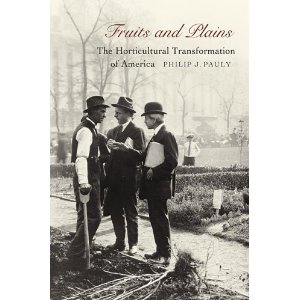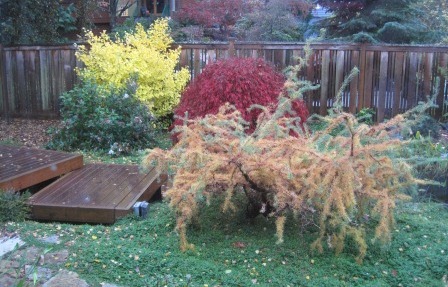
For those of you whose trees suffered storm damage this week, the ISA (International Society for Arboriculture) has an online article that may be of use.
If any of you have photos or questions regarding tree damage, please comment below. Photos can be sent to me (lindacs followed by @wsu.edu).
I’m doing a webinar for WSU Extension folks next week with the decidedly unsexy title of "How to run literature searches when writing extension publications and how to develop client material using the information from the lit search." In reality, it’s how to research gardening topics, identify the myths (those practices and products with no basis in science), and then write up the valid scientific parts for use by gardeners. I’d hoped to get some ideas from this group on specific topics to demonstrate the process, but have gotten nothing. And I’m doing this a week from tomorrow.
So…how about you all? What practices or products that we’ve covered on this blog (or haven’t) that you’d like to see put through my sorting process? I don’t think people outside the WSU system can watch the webinar, but I’d be willing to post something on the blog about it later.
Feel free to comment below – the earlier the better, as I have to have this done by the end of the week so I can develop the presentation. And thanks in advance for your ideas!
Between Hurricane Sandy and the inglorious end of the Tigers’ season, the news today has been pretty depressing here. So I figured I’d stay with something light today and talk about a bombing incident that occurred on campus last Friday. In case you’re wondering how a bombing on a major university campus can be considered a light event, I need to point out that this was a Yarn Bombing incident. Yarn Bombing (also referred to as Yarnstorming or guerrilla knitting) is type of street art – in this case garden art – where trees and other objects are covered with colorful yarn. What’s the point? I don’t know; does art have to have a point? Anyway, to add a little whimsy to your day, here are some photos from this weekend’s Yarn Bombing at the MSU Gardens.
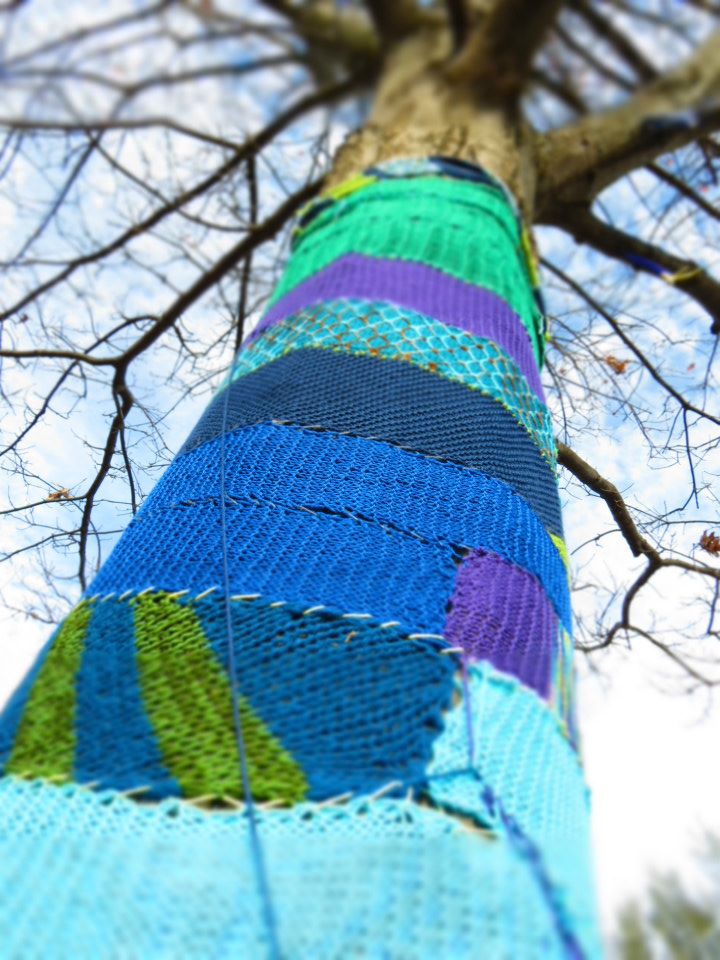
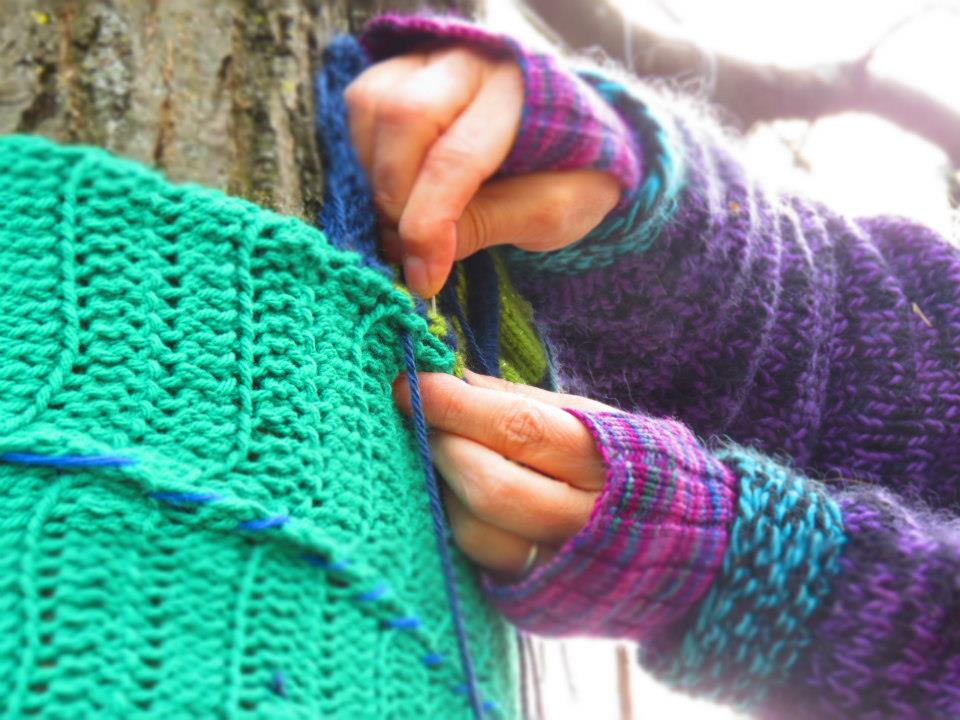

For more photos go to the MSU Gardens website
Thanks to Neil H. for sending this my way.
This is from The Tree Whisperer:
|
This past week one of our loyal followers, Karen, sent me a link to a New York Times Article by Mark Bittman. I have read articles by Bittman before and have found them to be kind of a mixed bag, some good, some not so good (but then I suppose many of you could say the same thing about my articles – so I’m not complaining). Anyway, this article was good. It discusses a study conducted in Iowa which demonstrated that growing different crops over time is healthier for the soil, reduces inputs like fertilizer and pesticides, and increases yields. Basically they’re saying that growing more than just soybean one year and corn the next is a good thing to do. For example, you could grow soy then corn then alfalfa. And basically I agree with the article. One of the things that it drives home really well is that there is a happy medium between dosing our soil with chemicals and going organic. I do have one complaint though. In the New York Times article Bittman seems to imply that yields of corn and soybean are higher when more crop rotations are used, and this isn’t exactly true. Certainly the yields were higher on a per year basis, but since corn (for example) was only grown for one out of every few years instead of once every two year, over the course of a decade you’d still produce more corn on the conventional plot – of course you would have additional crops, oats and/or alfalfa, planted to make up for this, but still, this is a significant concern and not one that can be brushed off quickly. There are certainly other concerns with this model if it ever became large. Would we be producing too much alfalfa? This study utilized cow manure as a fertilizer – how many cows per acre would you need? Still, I think this is a neat study and one which we should pay attention to as it’s stuff like this, rather than what we now call organic, which has real potential to decrease our pesticide and fertilizer use.
There was considerable interest in my post last week, where I shared a photo from Canadian garden writer David Hobson. I wasn’t impressed with the production method and materials for the petunia that was illustrated, but readers wanted to know a little more about the plant (how did the top of it look?) and the mesh encasing the root ball. So I contacted David, and he graciously shared some more information and photos with me.
Here are David’s comments:
“Attached are three photos. Not the best, but the one beside the broom is the original that I sent you. It’s been lying on the patio and has lost a few stems. I don’t have a shot of it in flower as I didn’t particularly like it — one of those new wine and yellow striped things. It was in a container with a couple of other plants and did flower somewhat, but not noticeably well.

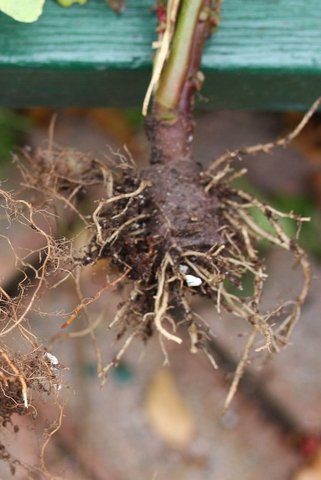
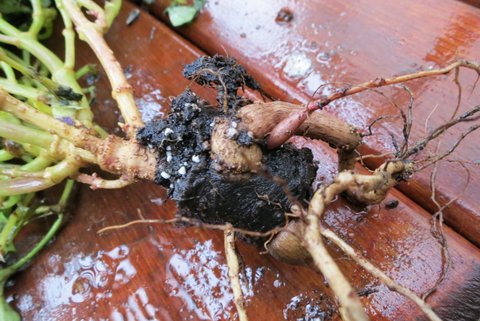
“As an after note, I removed the fabric from the petunia and dried it. It is a very fine mesh. I then subjected it to a heat source whereupon and it shriveled and melted as one would expect a plastic material to perform — draw your own conclusions.”

Not to be outdone by Bert’s recent postings, I thought I’d show you what’s going on with MY tree research in Washington State.
As you might remember, we installed 40 1-gallon mugo pines and 40 B&B Japanese maples at the end of December 2011. Here’s a photo of the site in April of this year:
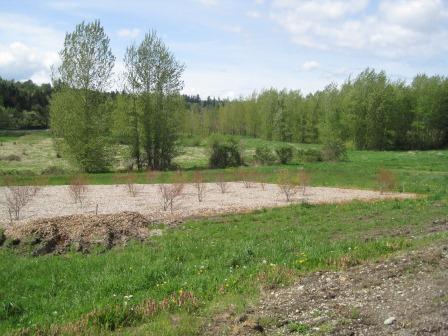
I’ve been collecting data on above-ground growth during this year, but have had an unexpected twist to my research, as shown here:
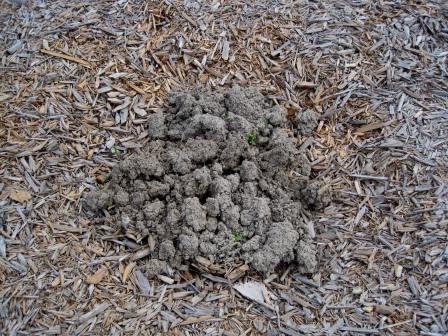
That’s a pine tree.
Yes, we have moles…BIG moles apparently…in Puyallup. There’s not much I can do besides move the soil away, but obviously the pine trees are not going to be happy with this additional treatment. The maples are tall enough where it’s not going to be much of an issue.
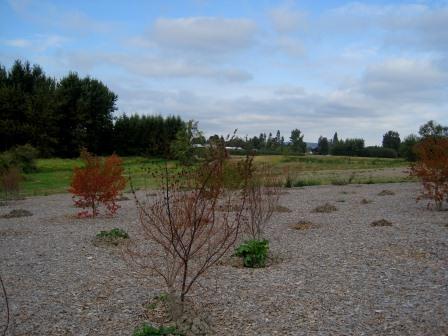
Note to self: next time install guard Dachshunds next to pine trees. (Thanks to the Fremont Tribune for this great photo!)

One of the best things about my job is I get to work around bright, enthusiastic young people everyday. And not just students here at MSU. Through conferences, meetings and other contacts I get to interact with students at other universities as well. Over the last couple of years I have had a chance to sit in on a couple talks by Alison Stoven O’Connor, who is an Extension Agent and Ph.D. student under the direction of Jim Klett and Tony Koski in Horticulture and Landscape Archetiecture at Colorado State University (and you thought you were busy!). For her Ph.D. research Alison is working on a subject near and dear to the hearts of the Garden Professors; nursery production and tree root development. After I saw her talk at the ASHS meeting this summer I invited Alison to take slot as a guest blogger but she declined, citing her time constraints – we’ll call it an excused absence. She did, however, graciously share some photos from her trial which, as you’ll see, pretty much speak for themselves.
A brief run-down on Alison’s study. She grew Chanticleer pear trees in #15 containers, including both standard black plastic containers and Smart Pot fabric containers in summer 2010. After growing the trees in the nursery for the summer, she transplanted the trees into a landscape-type planting in the fall of 2010. Last week (remember you come to the Garden Professors to get the latest!) she began sampling the roots of a subset of her trees with the aid of a local landscape company with an air spade. The depth of rooting appears to be consistent regardless of the type of container the tree was grown in. Width of the root system; that’s another story… While Alison has a ways to go in gathering and analyzing data, the photographic evidence looks pretty good for the Smart pots over the status quo.

Trees in nursery production.
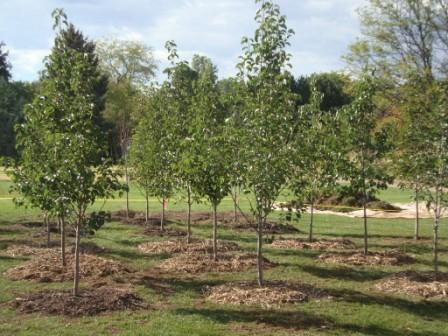
Trees in the ‘Landscape’ after transplanting,

Air spading to harvest roots
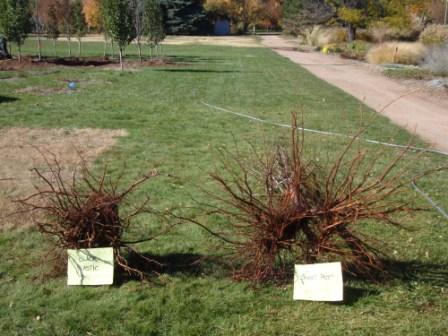
Root systems two years after planting in the landscape. Left – tree grown in conventional black plastic pot. Right – tree grown in Smart Pot. 630 miles between East Lansing and Minneapolis and I can already hear Jeff gloating, “Neener, neener, neener…”
Recently there have been a number of plant related books that have done really well in terms of sales. Brother Gardeners is one and What A Plant Knows is another. Personally, I think both of these books are nice additions to any horticulturists bookshelf. But there are always those books that have been forgotten. One of those books is Fruits and Plains: The Horticultural Transformation of America by Philip J. Pauly. Published in 2008 this is an accurate history (much more accurate that anything by Pollan for example — Not that Pollan writes bad stuff, but let’s face it, he’s a storyteller) of the evolution of horticulture in the United States over the past few hundred years — If you really want to know the history of horticulture here in the US then this is probably the best place to start. I can’t recommend it enough.
